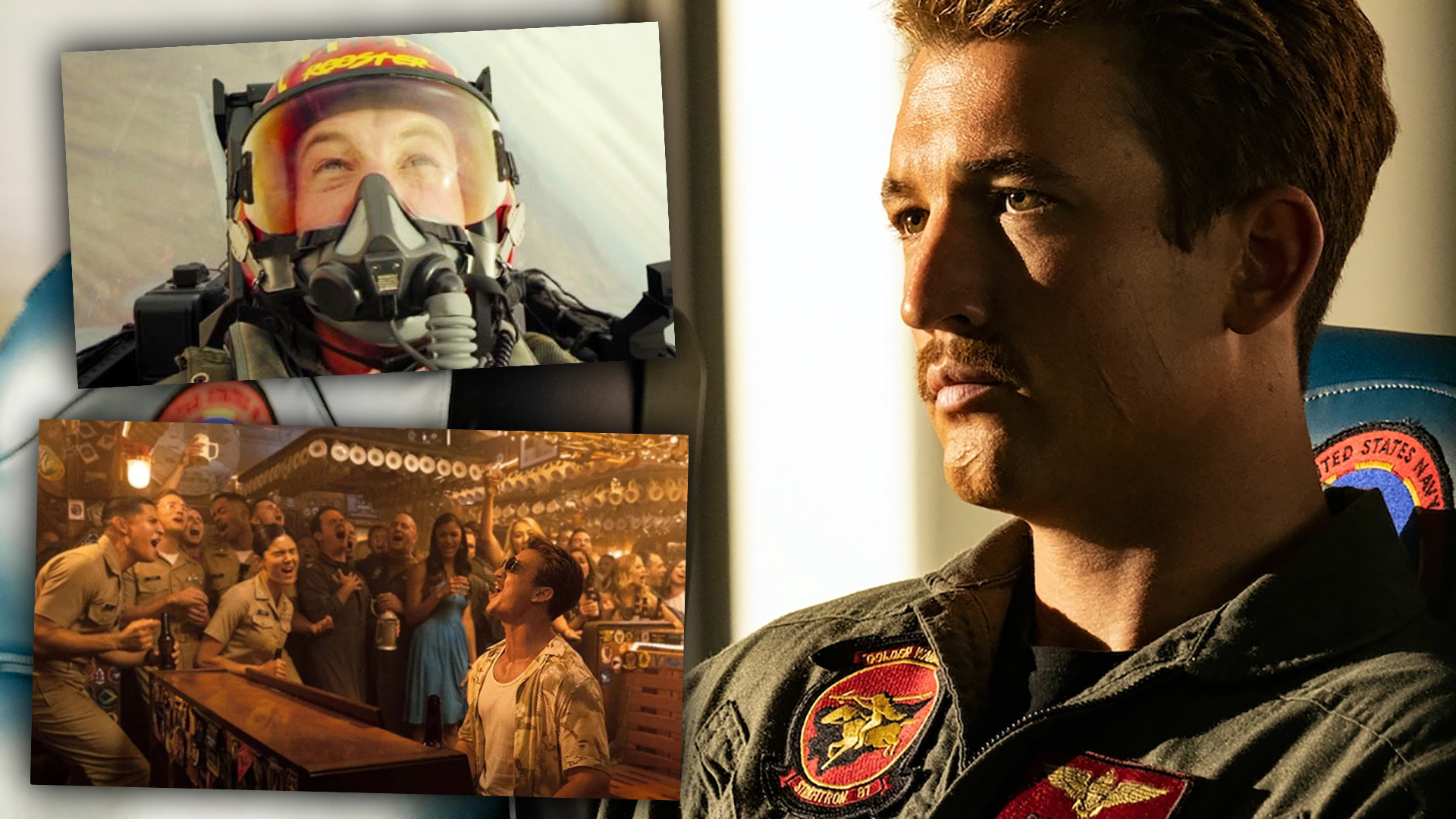It’s officially Paramount Pictures’ biggest movie ever. Top Gun: Maverick has not only smashed box office records but has been met with almost universal praise from both diehard military aviation aficionados and the wider movie-going public. But how does it stack up for someone who has been fully immersed in the world of naval aviation, an individual who has strapped into the cockpits of F-14s and F/A-18E/F Super Hornets and experienced high-intensity aerial duels and attack missions for themselves?
From G-LOC to burger-eating challenges, Joe “Smokin” Ruzicka provides his unique take on the movie and how it compares to his own 2,000-flight-hour career as a Radar Intercept Officer in the Tomcat and Weapon Systems Officer in the F/A-18.
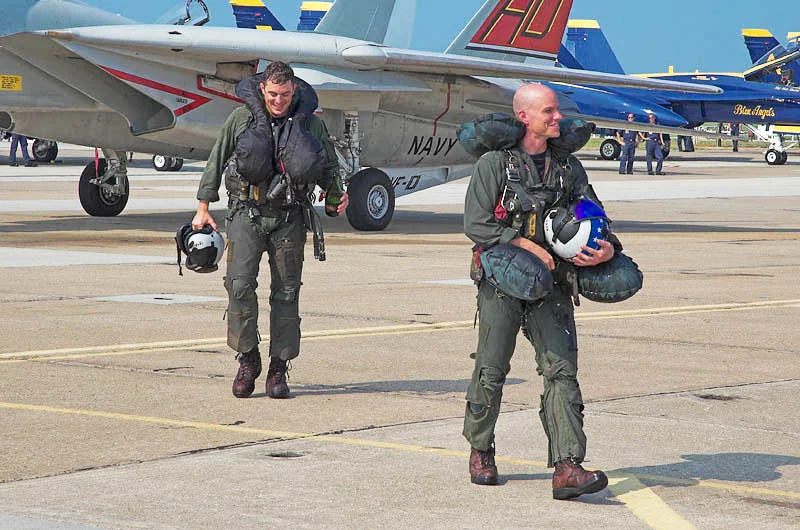
Now, let’s hand it over to Smokin!
Warning: there will be spoilers.
Let’s get realistic on being realistic. Now that we have had a few months to digest the new Top Gun movie, we should really take an honest look at what Top Gun: Maverick got right. I’m not going to lie, there are certainly some parts that are straight out of Hollywood. Flashy fighter jets performing impossible maneuvers, over-the-top personalities, music in the background to help set the mood for some of the most attractive people in flight suits you’ve ever seen. Trust me on the last part: when you serve with guys who look like their callsigns — Mongo, Piggger, Butthead — no one would pull them out of central casting.

But hey — I’ve got news for all of you experts reading this blog: no one really cares! We aren’t looking for a documentary here, we want an action-packed, as real as possible in two hours on a Friday evening, over-the-top thriller. Top Gun: Maverick delivered just that. It was a hell of a movie, and they got a ton of things right. Plus, if anyone were to make a movie about real-life jet jocks it would be boring as hell. The mundane outpaces the thrills by about 100 to 1. You think you get bored with your daily routine of eating, sleeping, and sitting behind a computer? Try doing it for seven months at a time while trapped on an aircraft carrier with 5,000 of your closest friends.
So, let’s focus on what they got right because there is a lot of it.
The Flying
In Tom Cruise’s opening comments prior to the movie, he mentions that this movie incorporates “real flying” and what the audience will see is him and members of the cast pulling “real Gs.” And the movie does do an incredible job of capturing what it looks and feels like to be in the cockpit of a fighter jet during a high-maneuvering flight. I think the big takeaway for anyone who saw Top Gun: Maverick is the movie showed real fighter pilots doing real flying, depicting the true-to-form experience Naval Aviators have in an F/A-18E/F Super Hornet. It all starts with the G’s.
G-LOC, or G-induced Loss of Consciousness, is a real threat to every fighter aviator. When pulling positive Gs, the blood in an aviator’s body flows from the brain area down to the lower extremities. Obviously, this can be a really bad thing because that slower transfer of blood means a loss of oxygen to the brain. Most of the time, you can tell in advance that the onset of Gs is reducing blood flow to the brain because your vision begins to ‘gray out’ — things actually begin to lose color and look gray — or you lose peripheral vision and only see a tunnel. In severe cases, the heavy onset of G can cause a loss of consciousness (G-LOC) in the individual just like we saw in the movie when Coyote blacks out.
Video of an Air Force F-16 pilot experiencing G-LOC as the jet hits around 8.3g. Although the pilot became unconscious, the Auto-GCAS executes a recovery maneuver:

To counteract that phenomenon, aviators wear a G-suit, which looks like a pair of chaps with inflatable bladders inside each leg and the abdomen. The G-suit is hooked up to a pressurized system within the aircraft and provides additional support during high-G turn rates. When a pilot pulls Gs in an aircraft, the bladders fill up with air, squeezing the blood from the legs and abdomen area back up to the brain. Aviators also perform an anti-G straining technique or what is commonly referred to as the ‘hook’ maneuver to maintain blood flow to the brain. You flex your butt and stomach muscles, plus use controlled breathing in an effort to magnify what the G-suit is also doing. It’s called the hook maneuver because the sound made when you breathe resembles someone grunting the word ‘hook.’ All new fighter aviators must train (and pass) in a simulated G environment using a centrifuge trainer.
Smokin’s good friend and fellow Tomcat RIO “Virus” Schomig in the centrifuge:

We saw the effect of these types of high-G maneuvers in the movie during the Basic Fighter Maneuvers (BFM) scenes, ridgeline crossings, and pulling off target. The excruciating strain on everyone’s faces, eyeballs being pulled down, oxygen masks falling off the bridge of the nose, straining while trying to breathe. All this gave a realistic depiction of what it feels like under G. And frankly, we saw that it also makes them look about 80 years old in the face.
Bob, Phoenix’s Weapons System Officer (WSO), actually does a noteworthy thing that shows just how difficult and real it is to move around in the cockpit under G. The WSOs are typically in charge of looking from the 3-9 line of the aircraft and back (everything from the wings to aft and behind) and they need to be able to anticipate the onset of G when looking back or get really surprised in a bad way. From personal experience, it is really tough to get your head around and look back if you are trying to do this after the onset of G. Your head feels about five or six times heavier than it actually is and if the onset of G catches you by surprise, it is virtually impossible to twist around and see behind you because your head is already likely buried downward. One way to counteract that is what Bob does: push against the canopy with your hands to counter the force being applied to your head and body. We see him do this a couple of times in the movie while also looking backward, ensuring their 3-9 line is clear.

The movie got a lot of other characteristics of flying in a fighter jet correct, particularly with individual tactics like high pops, ridge crossings, and buddy lasing. You can even see Maverick’s head bob down when the jet hits the end of the catapult stroke coming off the ship — that end of the stroke off the carrier is a real thump. The buddy lase tactic, where one jet is the ‘truck’ carrying the laser-guided bomb and the other jet provides the laser and designation of the target, is used on a regular basis. Trying to slew the pod onto the target after a ridgeline crossing and while in a dive is frankly really hard — particularly if the pod does not cue to the initial designation.
But maybe the most strenuous flying that was realistic in the movie involves evading and defending against surface-to-air missiles (SAMs). To successfully evade a SAM threat involves constant maneuvering back and forth, changing depth and altitude. The pilot also uses a full combination of G and available airspeed to make the aircraft difficult for the enemy to obtain a radar lock. When an active SAM is spotted visually, the last-ditch effort involves an orthogonal roll around the missile. SAM evasion tactics are physically and mentally exhausting.
SAM evasion in an F-16 during Operation Desert Storm:

Fun fact: ‘Deadeye,’ which is used in the movie, is the actual communication term used for when the laser designator system is inoperative
Camaraderie And Social Life
Top Gun: Maverick did a great job of highlighting the teamwork, camaraderie, and social life naval aviators live and breathe every day in a fighter squadron. One thing that stood out to me was the locations of the social scenes depicted in the movie. Everyone knows by now that the Hard Deck bar in the movie was modeled after the World Famous I-Bar, a staple of the social scene on Naval Air Station North Island. We see the exact same decorations in the Hard Deck that you would see if you walked into the I-Bar today: planes and beer mugs hanging down from the ceiling, squadron patches and plaques, a list of house rules where patrons can be fined for ‘infractions,’ and a bell to be rung when the infraction occurs. Some common infractions where patrons have to buy the entire house a round of cheer include:
- Covers or phones on the bar (poor Maverick, he should have known)
- Going behind the bar or touching anything behind the bar
- Rolling 5 naturals (5 aces in a dice game. Note: always preflight your cup and don’t stack the dice)
- Ringing the bell in a drunken stupor just because you want to
- Any local house rule that may require you to pay
I’m not sure if anyone else caught the reference to one particular ‘off the beaten path’ aviator hangout, but the scene where Maverick walks into the truck stop after ejecting from the SR-72 Darkstar sparked a few memories.

While the Darkstar is (more or less) fictional, there lies a place deep into the TOPGUN (one word, all caps) ranges of northern Nevada that looks eerily similar to the cafe we see Maverick wander into. This particular hangout is way off the beaten path and is found by driving down Highway 50, deemed the Loneliest Highway in America. Originally used as a stop on the Pony Express, Middlegate Station is the only sign of civilization in the Nevada desert for more than 50 miles. Naval aviators will know it because of the Middlegate Monster Challenge, a triple-decker beast of a burger that only the strongest stomachs can consume. During detachments to Naval Air Station Fallon, a trek out to Middlegate Station is a regular occurrence for aviators and a bucket-list item for the new guys.
Middlegate Station, a naval aviator hangout deep in the Nevada desert. travelnevada.com
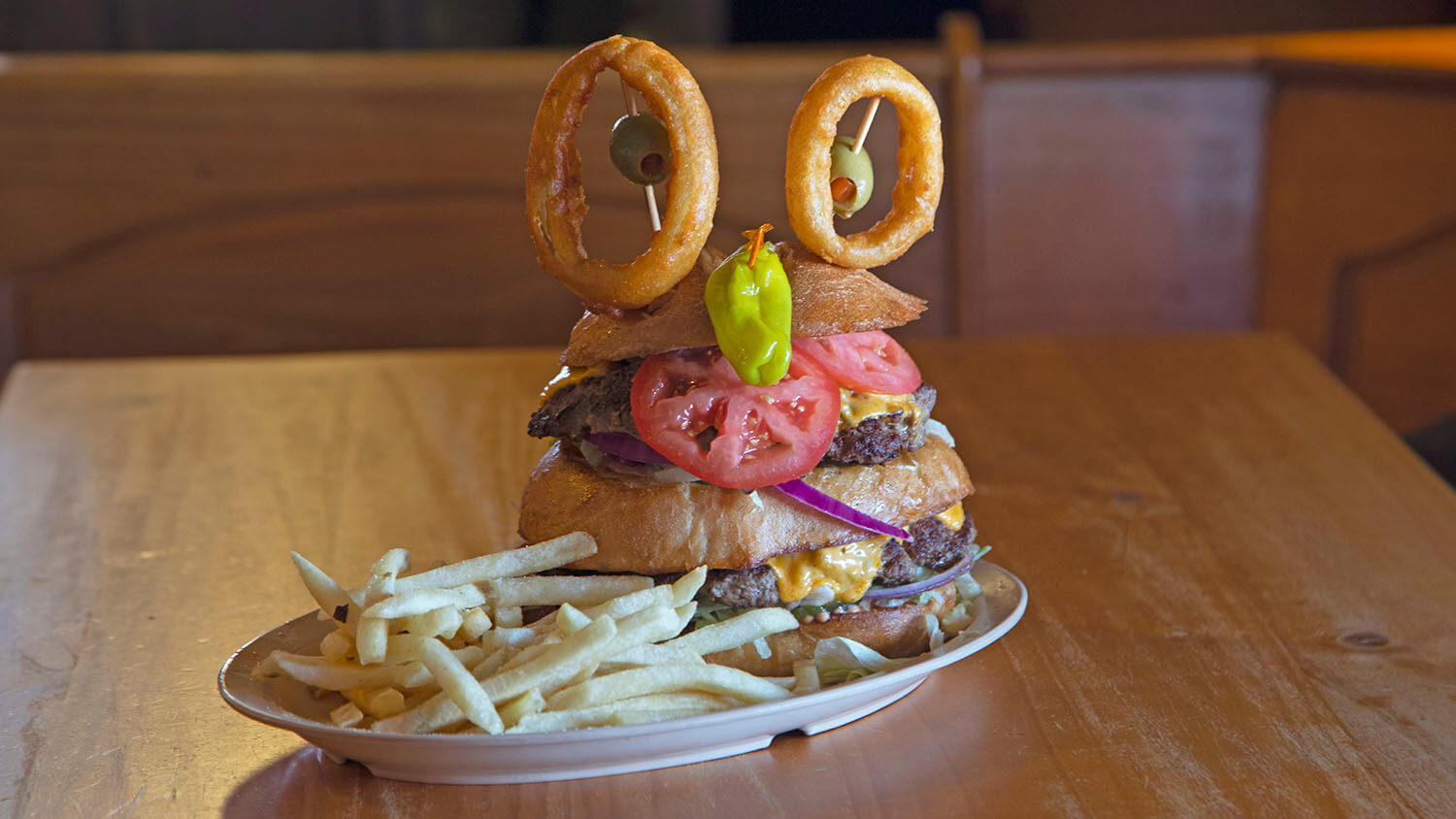
A fun training flight during a Fallon detachment workup involves chasing mobile surface-to-air missile trucks through the desert landscape. The mission known as SCAR (self-contained armed reconnaissance) involves using the E-2 Hawkeye to target fighters onto different mobile targets with their laser pods. From your airborne reconnaissance position, you spot these trucks speeding through the high country, kicking up dust that shows up very well to the naked eye from high above. The goal is to land a simulated laser-guided bomb on the moving targets, just like you might do in Afghanistan or Iraq, or maybe that unnamed adversarial country in the movie.
But you know what the craziest part is about that flight? If you trek out to the Middlegate tavern later that evening, these SAM truck drivers pull up in their fleet to get dinner! Imagine sitting at the bar next to some burly bearded individual wearing a red Peterbilt hat who just pulled up with fake missiles attached to the back of his five-ton truck. “Hey buddy — I just tried to fake kill you with a laser-guided bomb earlier today and now we are both sitting here trying to down a Middlegate Monster and Budweiser combo!”
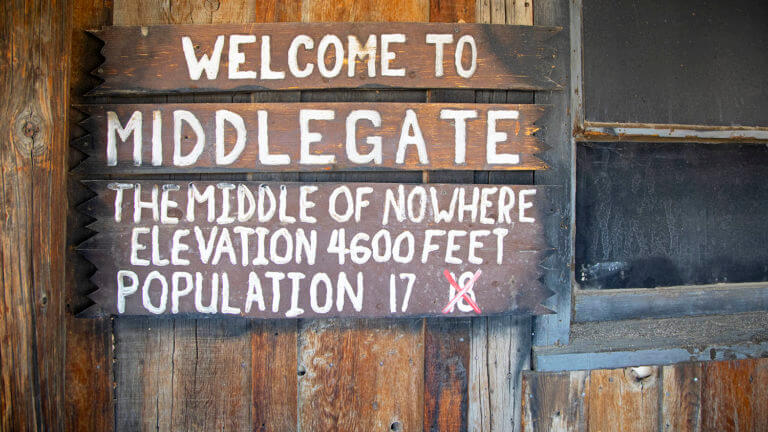
But more than a place to drink (or eat), establishments like the I-Bar, Middlegate Station, and O’Clubs provide a place for naval aviators to bond across the fleet. Many times, debriefs after a flight would occur at the club. This was an opportunity to get to know who you were going with on deployment, who you were going to live with for many months of your life on a ship, and potentially who you were going with into battle.
This closeness is a unique aspect of being in the military. So much of your time is spent with the people you work with, live with, and encounter stressful situations with, such as flying. The opportunity to spend time with them in a relaxed environment means a great deal to how a team is formed. And while there are certainly some guys who have Hangman-like attitudes, a fighter squadron tends to corral those individuals who may need it with a little humble pie.

Don’t get me wrong, big egos are a major part of naval aviation. I mean if you can land a 60,000-pound jet on a floating postage stamp in the middle of the ocean, you are probably going to be a little bit full of yourself like Hangman. Certainly, the movie overhyped the personalities a bit, but the producers only have a few hours to get the characters across to the audience.
Fun Fact: When naval aviators get promoted or preferred orders to a new duty station, many times they will throw their cover on the bar on purpose so they can ring the bell and buy the entire house a round of cheer.
Machine vs Man
There was a lot of discussion among aviators about fifth-generation fighters versus fourth-gen Super Hornets and the venerable F-14 Tomcat in the movie. Certainly, the capabilities of a fifth-generation fighter outpace that of anything else at the moment. Stealth, vectored thrust [in some cases], advanced avionics, and networked systems all play a part in making fifth-generation fighters a full step above a fourth-gen fighter — that’s why they are labeled as ‘next generation.’ But I think a key theme that was brought out from the movie was the fact that no matter what kind of aircraft you have, the execution of the tactical portion of a flight really comes down to the person in the machine.
A well-trained and experienced pilot against a mismatched superior threat may not have as lopsided of an outcome as expected. TOPGUN instructors routinely fly sorties and hold their own against students who are in superior aircraft. So, the idea in the movie that ‘it’s not the plane, it’s the pilot’ holds some validity.
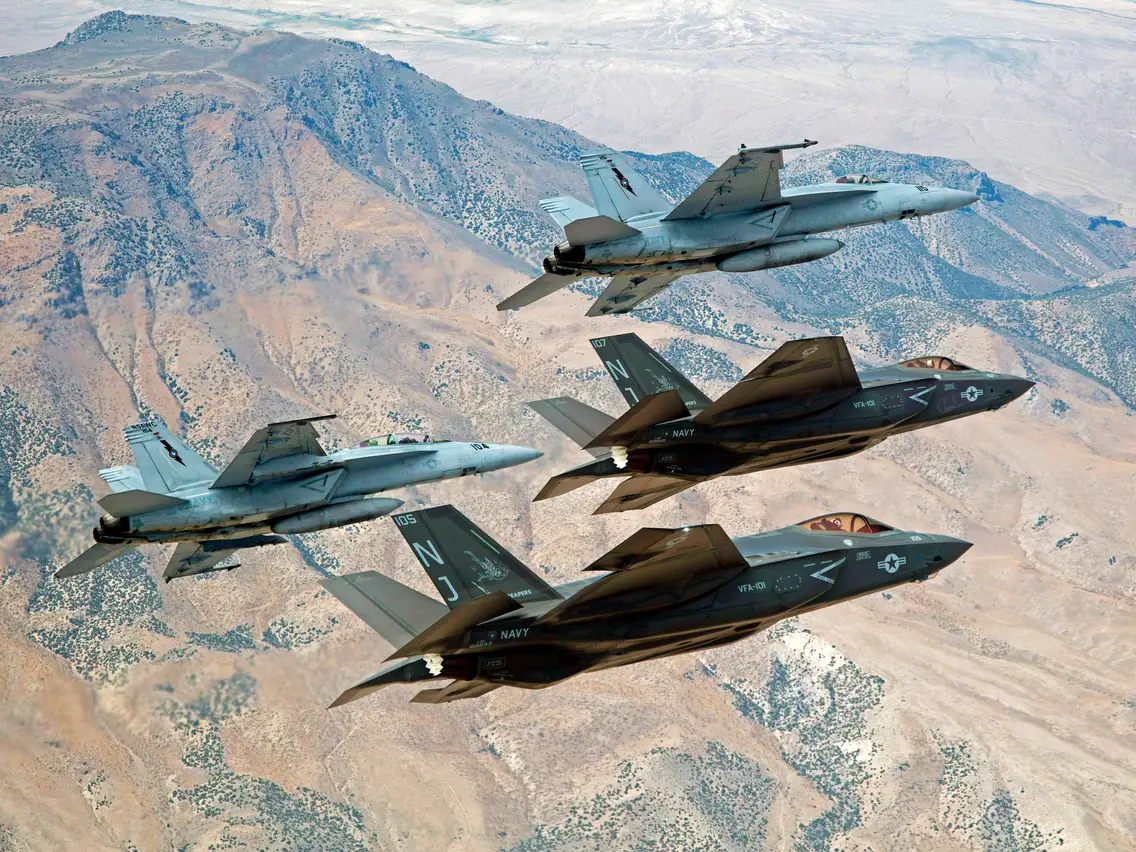
But, let’s be clear — the scenes with the fifth-generation adversary aircraft trying to take down the Tomcat are probably a little far-fetched. Those adversarial pilots were terrible shots and had no teamwork. You should never lose a 2-v-1 engagement, especially when you’re the ‘2.’ But we also have to give the Tomcat its due when it comes to speed. We call it ‘running away bravely’ or ‘bugging out.’ and it’s a valid tactic. Maybe, just maybe, Maverick plugged in the afterburners and maneuvered at the right time to avoid getting shot — just long enough for Hangman to get there and save the day. That’s what I have to believe from the ‘Big Fighter.’

The Tomcat
As an old Tomcat guy, it was really awesome to see the Big Fighter make an appearance on the big screen since it was the star of the show in the original movie. The U.S. Navy no longer operates the F-14 Tomcat (only Iran currently does), so watching the Tomcat fly in the movie obviously meant there were some special effects. However, there were some very realistic parts to the Tomcat scenes, and probably one of the most frequent questions I get from friends: “Were the Tomcat scenes realistic?”

Modern aircraft use an APU, or auxiliary power unit to start their aircraft. Think of it as a mini-jet engine that then provides power to the bigger engines. Conversely, the Tomcat used external air and external power provided by a machine called a ‘huffer’ (probably not the technical term). When we see Tom Cruise approach the huffer, he talks about getting enough power and pressure to the engines for the start and then orders Rooster to unhook the external air/power and “pull the pins” — all real Tomcat startup procedures.
F-14s plugged into starter cart ‘huffers’ ahead of a 1999 airshow appearance at Naval Air Station Oceana:

When Rooster climbs up the horizontal stab to get into the cockpit, this seems like the smart thing to do because you need the ladder closed to fly and nobody wants to walk in front of those huge intakes and get sucked down the engine. I’ve seen that climb from the back of the jet into the cockpit made a few times in a similar scenario.
Every old RIO got a chuckle out of Rooster looking back in terror at the multitude of circuit breakers in the backseat of the Tomcat. For the record, each circuit breaker in the back of the Tomcat had a three-character label (example: 1F6). This three-character designation described what panel, row, and space for each circuit breaker location. In our example above, the RIO would start from his or her left at panel #1, then go down to the sixth row (which is F) and count from left to right to find the sixth circuit breaker. This numbering system allowed the RIO to quickly find the circuit breaker even in a dark cockpit during a night flight.

Fun Fact: Maverick moves the Tomcat wings out using the Emergency Wingsweep handle. This handle bypasses the Central Air Data Computer, which is what normally controls the wing-sweep position in the Tomcat.
Conclusion
Holding the movie’s release for a couple of years due to the pandemic was smart and probably contributed to everyone’s need and desire to see a great movie. Sometimes timing means a lot and we were ripe for something to get us back to a normal summer.
The response has been overwhelming with the movie currently grossing over $1 billion dollars. But credit goes to Tom Cruise, producer Jerry Bruckheimer, and director Joseph Kosinski for involving and listening to the U.S. Navy in an effort to produce a realistic movie and what will likely turn into the biggest recruiting tool in decades.
From a personal standpoint, our little league baseball team rented out an entire movie theater and watched the movie for our after-season party. When your 10-year-old comes up to you and says that he loved the flying scenes, it brings a sense of pride to all those years you spent strapped into the cockpit.
Thanks, Tom!
Outtakes
During the beach football game, Hondo is wearing what appears to be an authentic U.S. Naval Academy football team jersey.
The NATOPS manual is also known as the ‘big blue sleeping pill,’ because reading it will put you to sleep.
One inconsistency with the motorcycle riding scenes: helmets are required in California.
Unlike in the movie, we could not find one millennial in real life who knows the words to Great Balls of Fire.
The audio warnings heard from the aircraft such as “Altitude!” and “Pull Up, Pull Up!” come from a real woman’s voice (Leslie Shook) who has affectionately been referred to as Bitchin’ Betty.
While bird strikes are not common, they can and do happen. Phoenix followed some pretty accurate procedures using airmanship 101: aviate, navigate, communicate, checklists — in that order.
Any pilot that pulls Gs to the point of a large overstress typically has to go down and help maintenance with the overstress tests and repair.
In the final scenes, we witness what is called a ‘covey launch’ from the carrier. These are ripple catapult launches to get each aircraft airborne and quickly rendezvous.
Contact the editor: Tyler@thedrive.com
